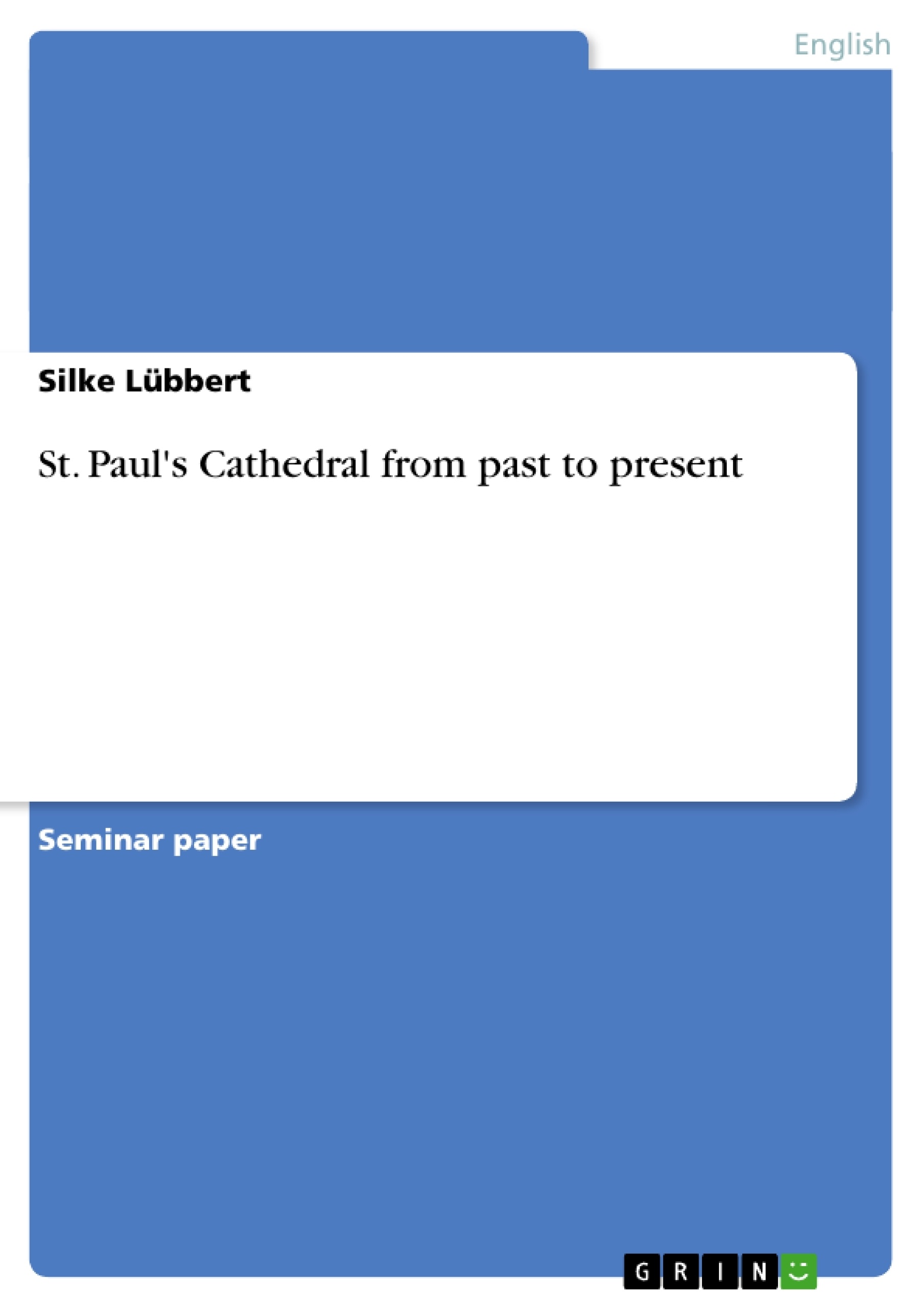When most people think of St. Paul's Cathedral in London the image of Christopher Wren's magnificent classical church rises in their minds, but there was a cathedral dedicated to St. Paul long before the construction of Wren’s cathedral.
This paper is going to show how St. Paul’s Cathedral became what it is today and what a church can be apart from a place for sermons.
Cathedrals have always played more than one role in the communities they serve. Their central purpose is to bring people closer to God, but over the centuries they have served as a focal point for trade, as fortresses and sanctuaries in times of war, and as vast status symbols - reflections of wealth and power of the region in which they stand. These functions take on an additional significance for St Paul’s, the cathedral of the capital city and also of the nation.
Today’s Church belongs to the people of the nation. For example, every citizen can be married or have a funeral service in his or her parish church; priests can marry couples without the presence of a civil official; and the General Synod, the Church of England’s governing body, is the only organisation outside Parliament that has the power to legislate.
Cathedrals are perhaps the ultimate reflection of this inclusiveness. Unlike parish churches, which exist to minister to the people of the local area in which they stand, they are a route to God for the larger community - a place of celebration and mourning where feelings can be shared and the sheer scale and beauty of the architecture, services and music allows visitors to experience the serenity and spirituality that are an essential counterpoint to the bustle of everyday life.
Inhaltsverzeichnis (Table of Contents)
- INTRODUCTION
- THE HISTORY OF ST. PAUL'S CATHEDRAL
- GENERAL TIMELINE OF EVENTS
- FIRST ST. PAUL'S CATHEDRAL
- SECOND ST. PAUL'S CATHEDRAL
- THIRD AND FOURTH ST. PAUL'S CATHEDRAL
- THE PRECINCTS OF OLD ST. PAUL'S CATHEDRAL
- RESTORATION WORK
- THE GREAT FIRE
- FIFTH ST. PAUL'S CATHEDRAL
- SIR CHRISTOPHER WREN
- NEW ST. PAUL'S CATHEDRAL
- BOMBINGS IN THE SECOND WORLD WAR
- TODAY'S ST. PAUL'S CATHEDRAL
Zielsetzung und Themenschwerpunkte (Objectives and Key Themes)
This paper aims to trace the evolution of St. Paul's Cathedral, showcasing how it has evolved from its earliest origins to its present-day status. The paper explores the multifaceted roles the cathedral has played beyond its primary function as a place of worship, highlighting its significance as a community center, symbol of power, and architectural masterpiece.
- The historical development of St. Paul's Cathedral, encompassing multiple phases of construction and reconstruction.
- The architectural evolution of the cathedral, from its early Roman origins to Wren's iconic design.
- The multiple functions of St. Paul's Cathedral throughout its history, including its role as a place of worship, a symbol of national identity, and a focal point for civic and social life.
- The impact of significant historical events, such as the Great Fire of London and the Second World War, on the cathedral and its surrounding community.
Zusammenfassung der Kapitel (Chapter Summaries)
The paper begins by establishing the historical context of St. Paul's Cathedral, outlining its evolution through various construction phases and destructions. It examines the significance of the different architectural styles employed, as well as the cathedral's role as a symbol of national identity and a place of social and civic importance. The paper then delves into the individual phases of St. Paul's history, exploring each cathedral's unique features, historical context, and impact on the community. It covers the periods of construction, destruction, and restoration, providing a detailed account of the cathedral's journey from its Roman origins to the present day.
Schlüsselwörter (Keywords)
The primary focus of this paper lies on St. Paul's Cathedral in London, exploring its rich history, architectural evolution, and multifaceted roles. The work explores key concepts such as the cathedral's significance as a symbol of national identity, its evolution through phases of construction and destruction, and its diverse functions as a place of worship, community center, and architectural landmark. The paper also delves into the impact of significant historical events on the cathedral and its community, providing a nuanced understanding of its enduring importance in London and beyond.
- Quote paper
- Silke Lübbert (Author), 2004, St. Paul's Cathedral from past to present, Munich, GRIN Verlag, https://www.grin.com/document/74264




